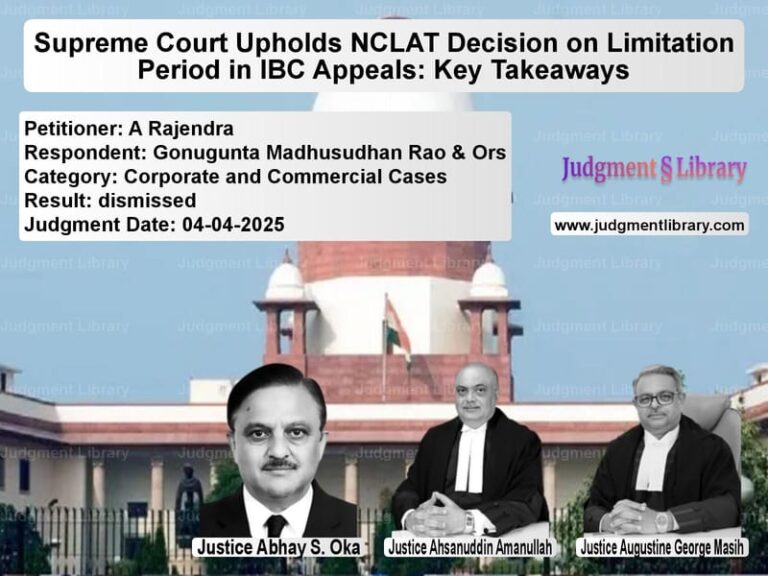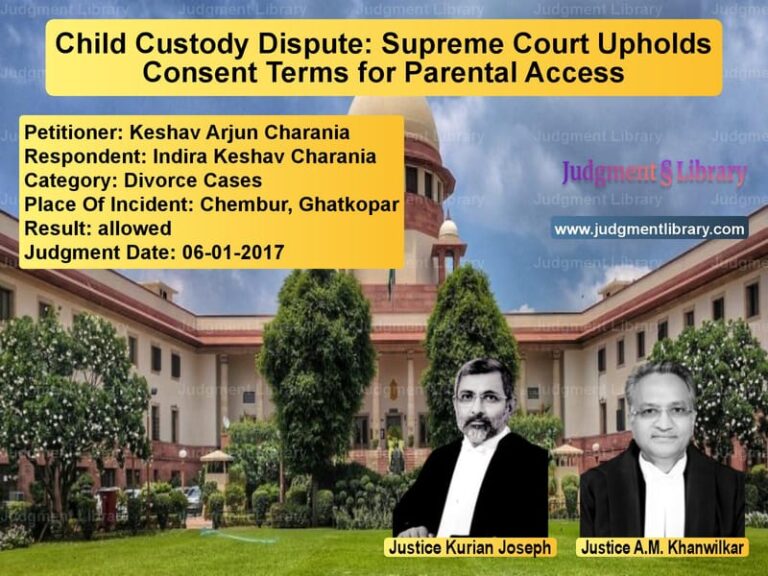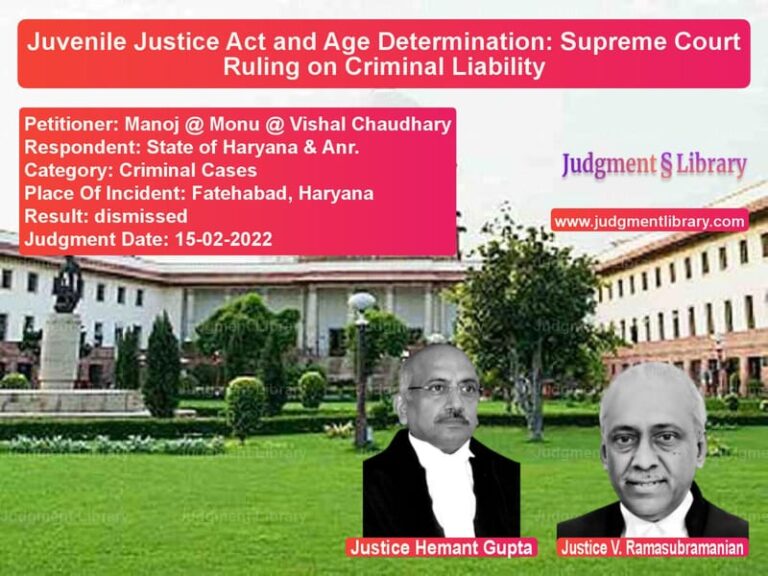Land Acquisition Compensation: Supreme Court Rules on Fair Valuation and Deduction Criteria
The Supreme Court of India recently ruled in a significant land acquisition case, Union of India vs. Premlata & Others, concerning the fair valuation of acquired land and appropriate deductions for development charges. The judgment provided clarity on how compensation should be calculated for large tracts of land acquired for public purposes, setting important legal precedents for future cases.
The dispute arose when the government acquired land in Borkhedi, Nagpur, for the Ministry of Defence’s Research and Development Organization. While the landowners sought higher compensation, the government argued for a more conservative valuation, citing differences in land usage and necessary deductions. The Supreme Court ultimately ruled that a 40% deduction towards development charges was appropriate, modifying the High Court’s earlier decision.
Background of the Case
The case involved the acquisition of 45.89 hectares of land in Borkhedi, Nagpur, under the Land Acquisition Act, 1894. The notification for acquisition was issued on November 5, 1992, and the land was taken over for defence-related purposes.
The Land Acquisition Officer initially awarded compensation at a rate of Rs.1,13,500 per hectare for one parcel and Rs.1,35,000 per hectare for other parcels. However, the landowners challenged this valuation, and the matter was referred to the Reference Court, which increased the compensation to Rs.6 per square foot with a 25% deduction towards development costs.
Both the acquiring body and the landowners were dissatisfied with the ruling and appealed to the Bombay High Court. The High Court revised the development cost deduction to 33.33% (1/3rd) while maintaining the Rs.6 per square foot valuation.
Unhappy with this decision, the Union of India and the landowners approached the Supreme Court, leading to the present ruling.
Petitioners’ Arguments
The Union of India, represented by Additional Solicitor General K.M. Nataraj, presented the following key arguments:
- Determining compensation on a per-square-foot basis was inappropriate for large tracts of land.
- Smaller plots fetch higher market prices, making them unreliable as reference points for large land acquisitions.
- The deduction for development costs should be higher than 33.33% due to the scale of the acquisition and necessary infrastructure development.
- The Reference Court and High Court did not properly account for the cost of converting agricultural land into usable plots.
Respondents’ Arguments
The landowners, represented by Senior Advocate Gopal Sankaranarayanan, countered with the following points:
- The Rs.6 per square foot valuation was justified, as nearby land parcels had sold for Rs.7 per square foot before the acquisition.
- Only a 25% deduction was reasonable, as the adjacent lands had undergone similar conversions with minimal development loss.
- Expert valuation reports supported the higher valuation, and market trends indicated significant appreciation in land value.
- The land was already in proximity to a developed area, making extensive deductions unnecessary.
Supreme Court’s Judgment
The Supreme Court, comprising Justices M.R. Shah and B.V. Nagarathna, ruled that a 40% deduction for development charges was appropriate. The Court made the following key observations:
- Per-Square-Foot Valuation: The Court acknowledged that while valuation on a per-square-foot basis is generally inappropriate for large land parcels, it was justified in this case given the location and potential of the land.
- Development Cost Deduction: The Court ruled that a deduction of 40% was fair, given the need for infrastructural improvements and conversion from agricultural to non-agricultural use.
- Comparative Sale Instances: The Court held that while small plots typically command higher prices, adjacent sales at Rs.7 per square foot provided a reasonable benchmark, justifying the Rs.6 per square foot compensation.
- Ensuring Fair Compensation: The judgment emphasized that compensation should reflect both the current market value and necessary deductions, ensuring fairness for both landowners and the acquiring body.
Implications of the Judgment
This ruling has far-reaching implications for land acquisition cases:
- Standardizing Development Cost Deductions: The Court’s 40% deduction benchmark provides clarity for future cases involving large land acquisitions.
- Balancing Market Rates and Land Size: The judgment reinforces that smaller plots cannot always be used as direct comparators for large-scale acquisitions.
- Guidance for Future Land Acquisitions: The decision helps in determining fair compensation while preventing excessive payouts that might burden government projects.
- Judicial Oversight on Land Valuation: The ruling reiterates that courts play a crucial role in ensuring equitable compensation for landowners without compromising public interest.
Conclusion
The Supreme Court’s decision in Union of India vs. Premlata & Others strikes a balance between ensuring fair compensation for landowners and protecting public funds in large-scale acquisitions. By reaffirming a 40% deduction for development charges and maintaining the Rs.6 per square foot valuation, the judgment sets a precedent for similar cases in the future. This ruling serves as an essential guideline for both landowners and acquiring bodies navigating land acquisition disputes.
Petitioner Name: Union of India.Respondent Name: Premlata & Others.Judgment By: Justice M.R. Shah, Justice B.V. Nagarathna.Place Of Incident: Borkhedi, Nagpur.Judgment Date: 06-04-2022.
Don’t miss out on the full details! Download the complete judgment in PDF format below and gain valuable insights instantly!
Download Judgment: union-of-india-vs-premlata-&-others-supreme-court-of-india-judgment-dated-06-04-2022.pdf
Directly Download Judgment: Directly download this Judgment
See all petitions in Property Disputes
See all petitions in Damages and Compensation
See all petitions in Landlord-Tenant Disputes
See all petitions in Judgment by Mukeshkumar Rasikbhai Shah
See all petitions in Judgment by B.V. Nagarathna
See all petitions in partially allowed
See all petitions in Modified
See all petitions in supreme court of India judgments April 2022
See all petitions in 2022 judgments
See all posts in Civil Cases Category
See all allowed petitions in Civil Cases Category
See all Dismissed petitions in Civil Cases Category
See all partially allowed petitions in Civil Cases Category







